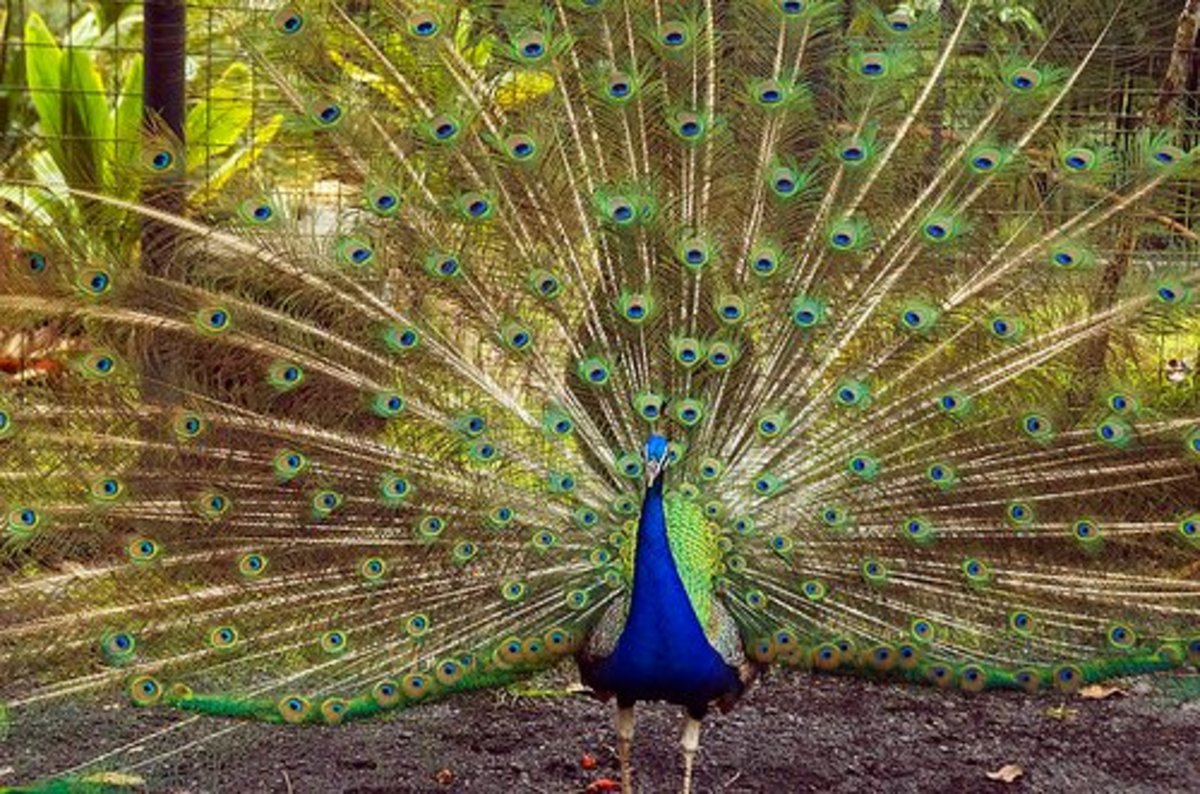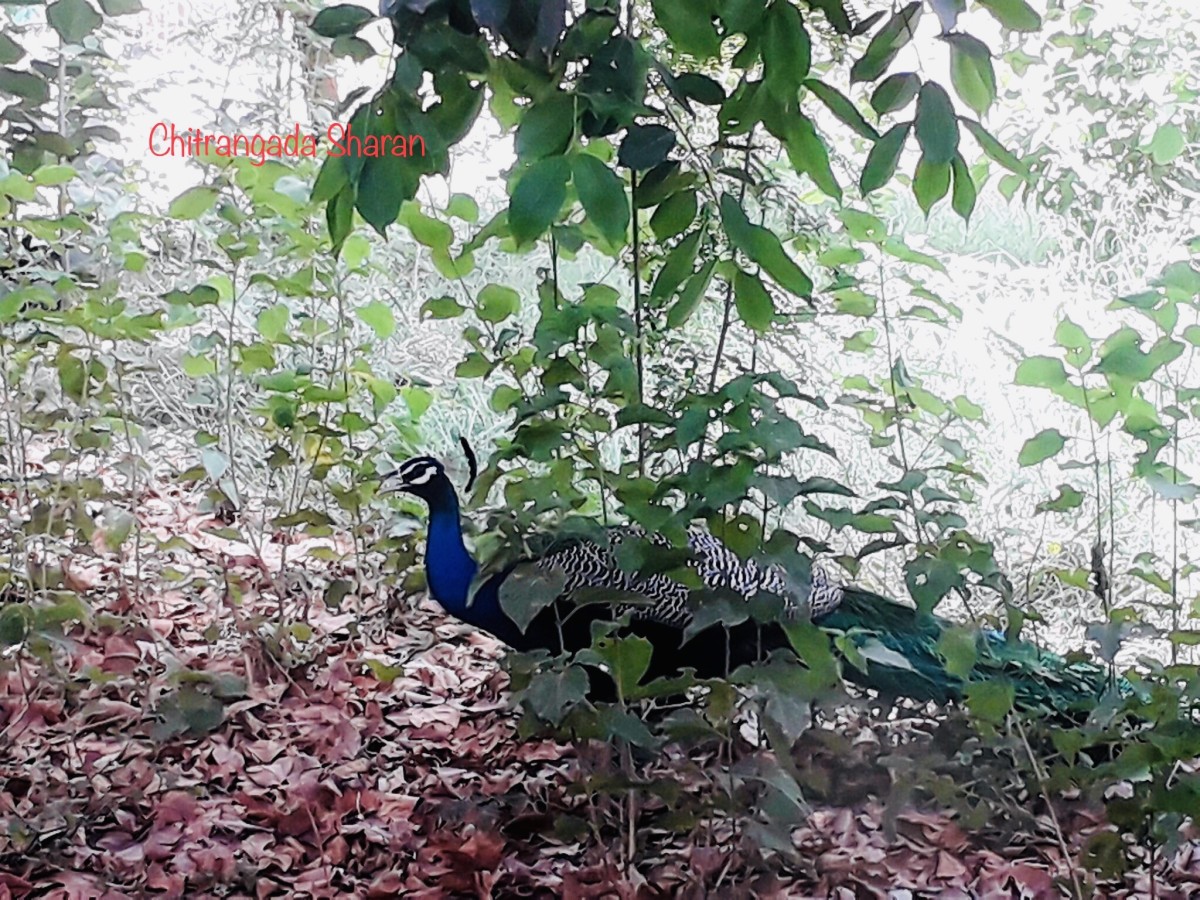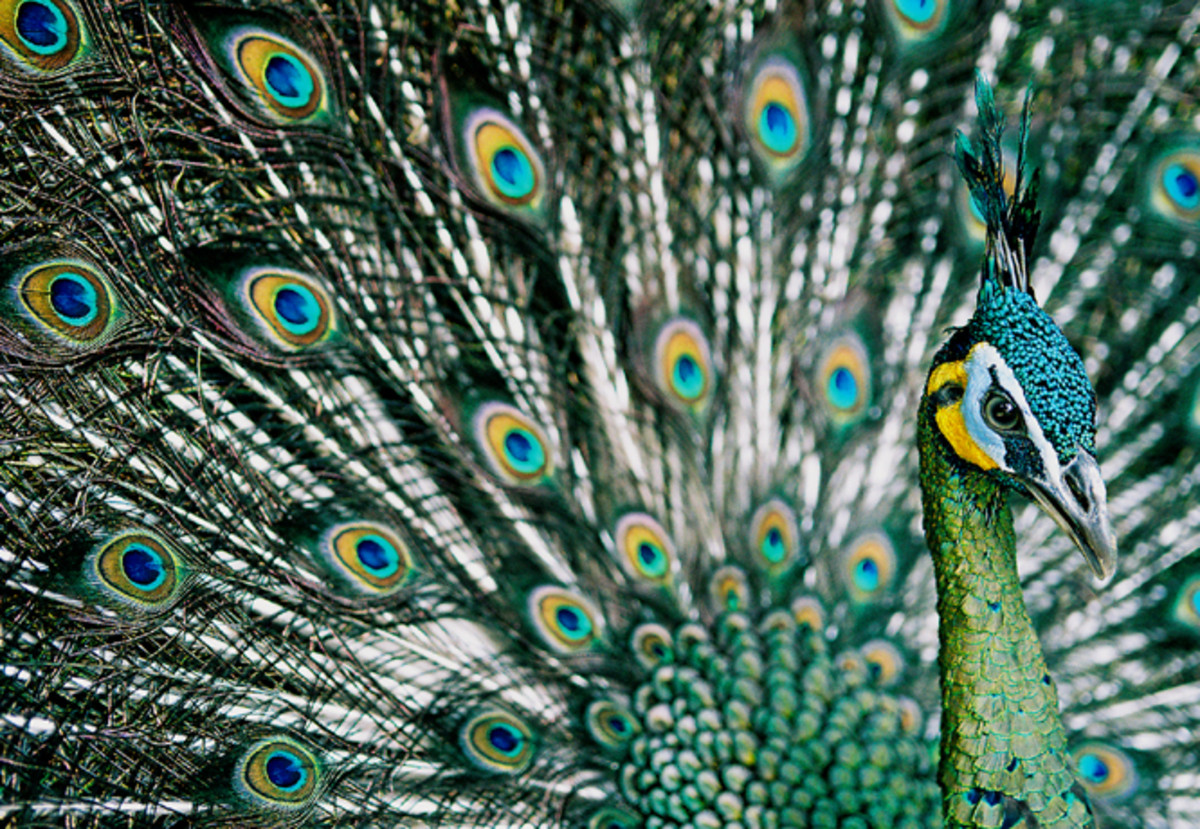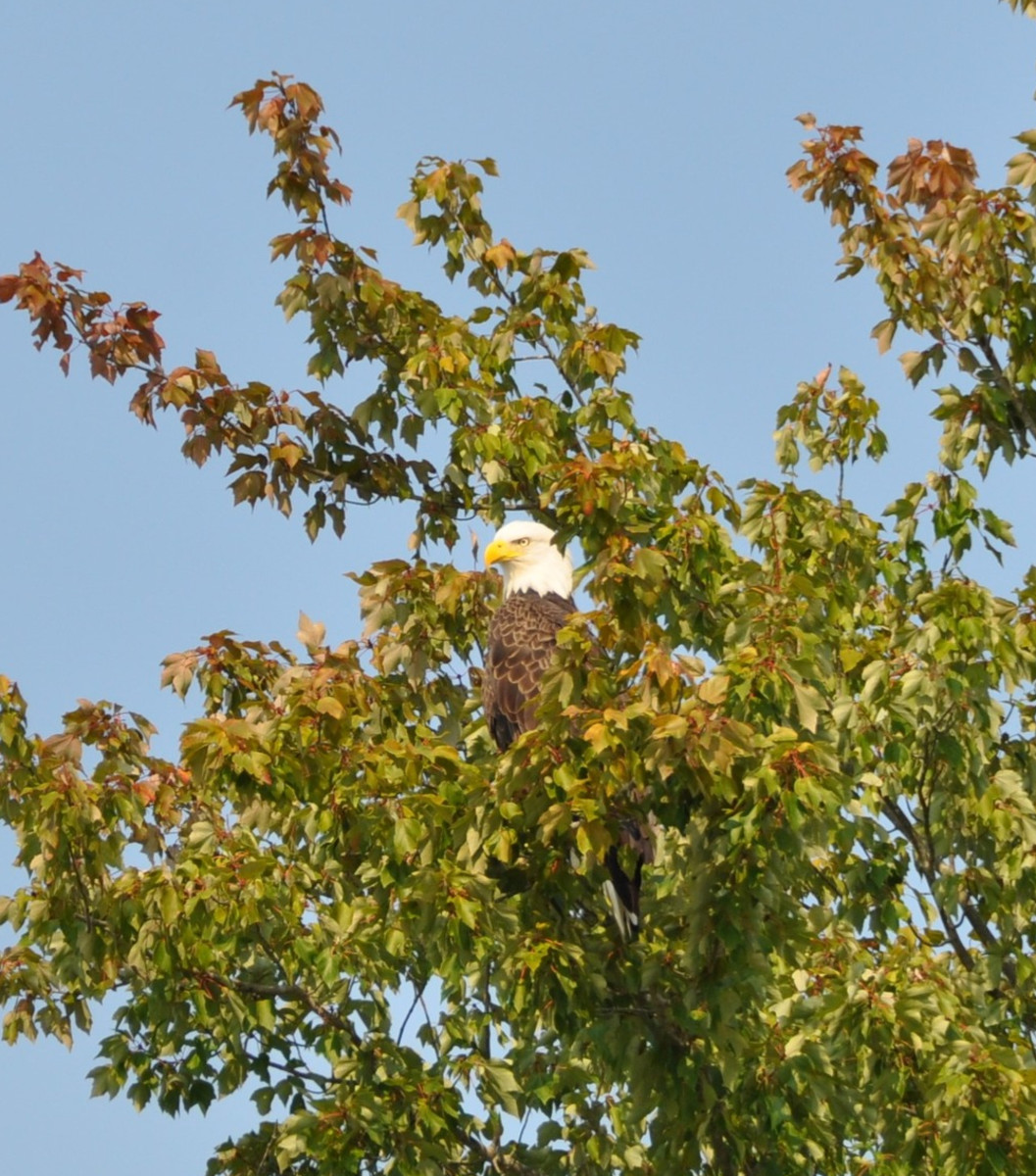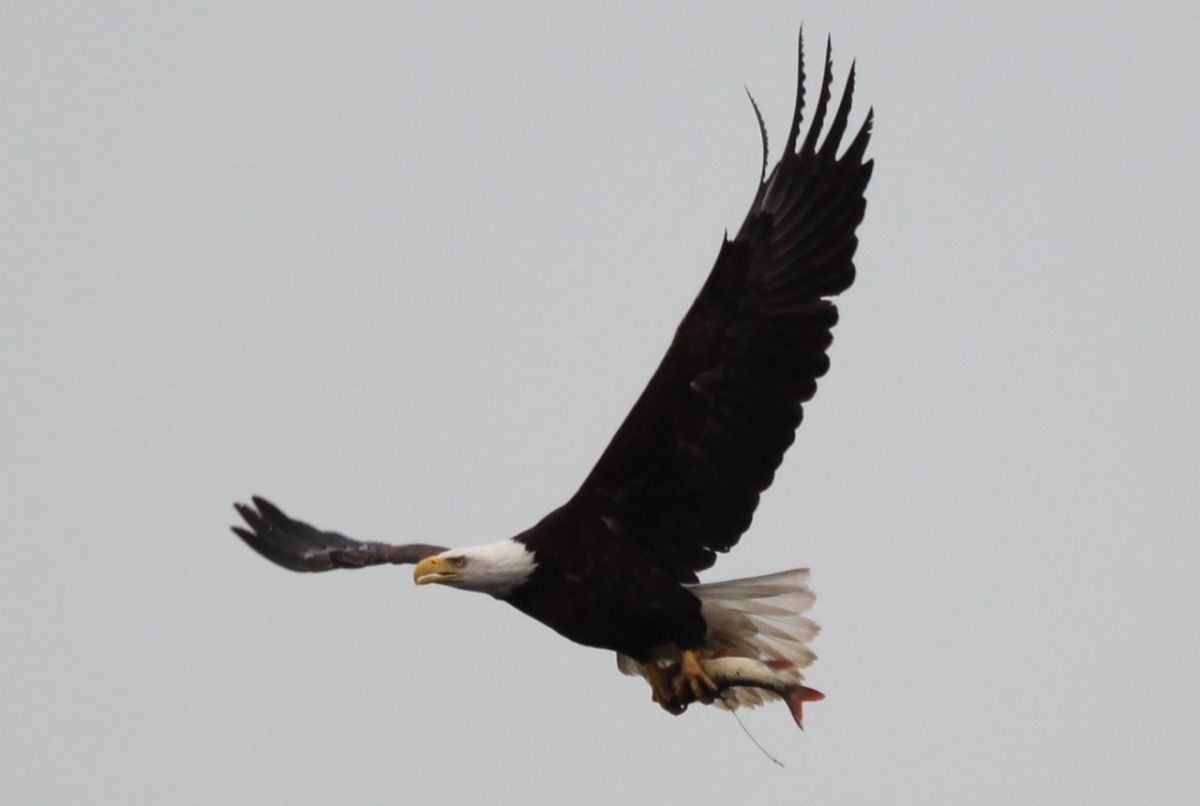Peacock - Peacock facts, information and trivia
The Peacock heritage of India
The peacock is one of the most beautiful birds. My first memory of the peacock is at the age of four or five, when I first visited a national park, and since then, I have been fascinated by the bird. The beauty of the bird is so legendary that you will see it woven in silk and gold on Indian saris, cast in bronze or brass lamps, printed on clothes and wall hangings and almost anything that you can lay your hands on, in India. It is the national bird of India and is greatly revered here by the Hindus.
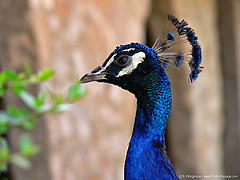
Peacocks - Facts and information
The peacocks or technically, the pea fowls (the collective name for the peacock and peahen), belong to the pheasant family. They are large, swan-sized birds weighing anything between 4 to 6 kg (8.75-13 lbs.) and the body length of the peacock, including its tail, could go up to 5 feet or 1.5 meters. These fowls have a lifespan of 20 years, but domesticated peacocks have been known to live for up to 40 years. It is commonly believed that peacocks cannot fly. The truth is that they do fly but only for short distances. The peacock is one of the largest flying birds. These birds are peace-loving and live in large group called a party. Peacocks roost on trees to protect themselves from predators. A peacock often has a harem of peahens around him. The peahens are known to choose their mates according to the size, colour and quality of their trains.
The beautiful colour on their neck and the stunning markings on their tail make them attractive, and hence, legendary. The Indian blue peacock (Pavo cristatus) is blue-green, while the Hermes peacock is rather green around neck and is found in Java and Myanmar. The third kind of peafowl is called the Congo peafowl that inhabits the African rain forests and is listed under the endangered species of birds.
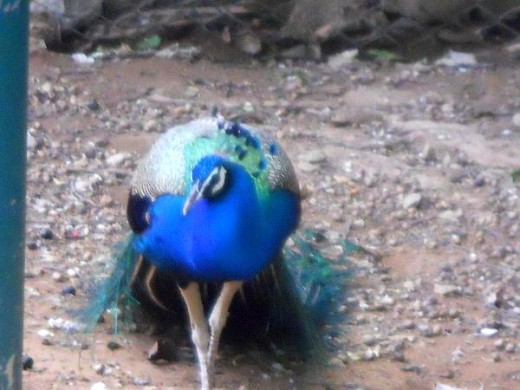
The beautiful plumage of the peacock and the inspiration it affords
The peacocks have brilliant plumage on the tail marked with iridescent eyes or spots on them, with a spectrum of blue, gold, orange, yellow and purple. The males have a beautiful crest on their heads, which looks like a crown, and makes the bird rather regal in appearance. The tail of the peacock is made up of brown feathers but the train that grows from the middle is what is often mistaken for the tail. The peacock uses its rather huge fan-like tail/train in its mating dance to attract the dowdy little peahen. The peacock also dances just as the clouds gather and it is time for a downpour. The rain dance of the peacock has been the subject of many a poem and work of art. The peahen on the other hand, is a rather dull and dowdy looking bird, like all females of the bird species, with brown, grey and green feathers. Unfortunately the gorgeous plumage that make the peacocks legendary are also the reason why they are hunted.
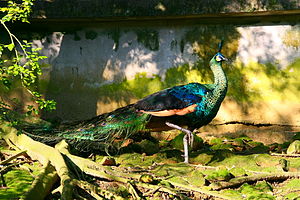
The peacock and its royal connections
The beauty of the peacock has often caused it to be referred to as a proud bird, and there are many stories and traditions surrounding this. Peacock feathers have been used for centuries to fan the royalty and have become a part of the headgear of royalty and beautiful women alike. The peacocks have been the favoured pets of royalty and found a pride of place in royal gardens. But today in India, you cannot own a peacock nor have one for your pet as these are protected animals. The Pea fowls are omnivores and feed on plants, flowers, small insects and reptiles.
Peacocks are easy to raise and take care of; peahens make excellent mothers and so it is easy to get their numbers up with a little help. The peahens lay 2-3 eggs which hatch in twenty eight days. The birds need plenty of sunshine and a lot of open space to thrive. Peacocks are celebrated in all walks of life in India, Indan cinema is a huge industry and like the Palm D’Or in France, in India, we have the golden peacock award for films. A constellation is named after the bird and so are butterflies.
Where can you see Peacocks in India - in the wild
It was about twenty years ago when I travelled to a place called Viralimalai a small town near Trichy in Tamil Nadu (South India) that I saw the peafowl at close quarters. This is a thirty kilometre drive from the Trichy airport. Here, the peacocks and their female counterparts, the peahen walk the streets like chicken in a farmyard. Wild Peafowl’s are to be seen every where around the Murugan Temple and the streets of the town. They are rather sociable birds and seem to be happy to live among humans without fear. I wondered how it was possible, and I was told that these birds are protected by plain clothes sanctuary officials. If you dare harm the birds, you could be arrested and punished. Seeing peacocks in the wild is more special than seeing one locked up in a cage. Here the bird would have lost of its alertness and qualities that are exhibited in the wild for its survival.
Another part of India where you would commonly sight a peacock is in Rajasthan. If you travel by road in Rajasthan you wild find wild peacocks in fields, farm lands on trees etc, so make sure that you bring your cameras along and have it ready for use especially if you are a bird watcher. Rajasthan, then is definitely your paradise like Viralimalai would be.
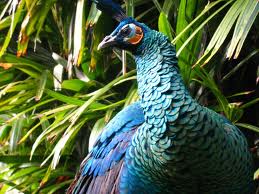
Peacocks the legendary birds - Mythological stories and history
According to Hindu mythology, God Karthikeya, son of Shiva rides on the back of a peacock. That is why it is revered as the “vehicle of the Gods’ by the Hindus. Folk dance, called “Mayilattam” or “the peacock dance” is a very popular dance, where the artistes dress up like peacocks and imitate the dance of the peacock. History tells us that Shah Jahan, during his reign, had a magnificent peacock throne, inset with rubies, garnets, pearls, emeralds and diamonds. The Peacock Throne is said to have cost the Mughal Empire an astounding 71 million rupees at that time. The throne was fashioned out of a quarter ton of gold, but the fate of this throne is now a mystery. The throne fell into British hands along with the Kohinoor Diamond in June, 1782, while it was being taken to Britain; it was waylaid and plundered by the Kurds. The throne is presently supposed to be buried at the bottom of the Indian Ocean. (Source: Wikipedia).
Greek mythology describes how the peacock got his eyes in his train. It is said that Goddess Hera had a beautiful priestess called Lo, who was admired by Zeus. Zeus changed Lo into a heifer to protect her from the jealousy of Hera. Hera somehow tricked Zeus to gift the heifer to her, and she set her favourite watchman Argus, who had eyes all over his body, to watch over Lo. Zeus sent Hermes to free Lo from the watchful eyes of Argus. Hermes charmed Argus to sleep and waited until all his eyes were closed, and eventually killed him. To honour her faithful watchman, Hera took the eyes of Argus and placed them on the tail of a peacock, a strange tale indeed.
Many of my bedtime and childhood stories surrounded the peacock, its beauty, pride and vanity. Our elders would always have a never-ending supply of peacock stories to tell us.
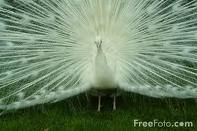
White Peacocks - Birds of elegance and ethereal beauty
The white peacocks is often confused with and thought of as an albino peafowl. The white peafowl is a bird of ethereal beauty and elegance. It is not an albino but is just a variation of the Indian blue. The white peacock, which was equally stunning, with its long tail and graceful white plumage is thought to bring good luck and long and happy marriage. Though there are no eye-markings on the tail, the shapes remain the same. I have only seen these birds in captivity and not in the open thus far.
Peacock under threat - save the peacock
The peacock population in India is under threat. The only peacock census ever conducted in India was by the WWF in 1991. This census revealed that only 50% of the total peacock population in India in 1947 had remained. The peacock is under threat not only for its feathers but also for its meat. Habitat destruction and the straying of peacocks into farms causing farmers to poison the peacocks to protect their farms seem to be the major threats.
It is time that this beautiful bird is protected and allowed to thrive in its natural habitat. Wouldn’t it be a pleasure if future generations also had the opportunity to see them and admire them for their beauty? I am sure that I would like my children show it to their children and tell them about some of our peacock heritage.

